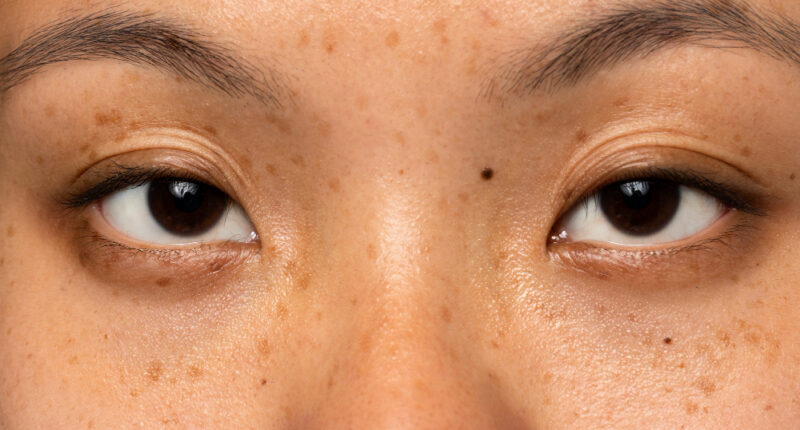Hyperpigmentation is a really common skin condition in which certain areas of the skin get darker. It’s something a lot of people deal with. Hyperpigmentation occurs when an excess of melanin, the pigment responsible for skin colour, forms deposits in the skin. Although hyperpigmentation is generally harmless, it can be a cause for cosmetic worry for many people. To effectively manage and reduce hyperpigmentation, it’s essential to have a clear understanding of its causes, types, and available treatments.
Understanding Hyperpigmentation
Hyperpigmentation can affect people of all skin types. Darkened patches or spots on the skin, often referred to as hyperpigmentation, can occur due to an overproduction of melanin. This can often manifest in areas of the skin that are frequently exposed to the sun, such as the face and hands. There are several types of hyperpigmentation, each with different causes.
1. Melasma
Melasma is a form of hyperpigmentation that often occurs during pregnancy or with the use of birth control pills. It appears as dark, irregular patches on the face, especially the cheeks, forehead, and upper lip. Sun exposure and hormonal changes are the main culprits for setting off these reactions.
2. Post-Inflammatory Hyperpigmentation (PIH)
PIH occurs following an injury or inflammation of the skin, such as acne, eczema, or psoriasis. It manifests as dark spots in the areas where the skin is affected. PIH can occur in all skin types but is more prevalent in individuals with darker skin tones.
3. Sunspots (Solar Lentigines)
Over time, sunspots, also referred to as age spots or liver spots can develop from extended exposure to the sun. They typically appear as small, darkened areas on sun-exposed skin, such as the face, hands, shoulders, and arms. Sunspots are more common in older adults.

Causes of Hyperpigmentation
Hyperpigmentation results from an overproduction of melanin. Several factors can trigger this overproduction:
Sun Exposure: UV rays stimulate melanin production, leading to sunspots and worsening existing hyperpigmentation.
Hormonal Changes: Melasma can be triggered by factors such as pregnancy, birth control pills, and hormone replacement therapy. Keep this in mind!
Skin Injuries or Inflammation: Conditions like acne, eczema, and psoriasis can lead to PIH.
Medications: Did you know that some medicines, like chemotherapy drugs, can lead to hyperpigmentation as a potential side effect?
Genetics: A predisposition to hyperpigmentation can run in families.
Treatments for Hyperpigmentation
While hyperpigmentation is not harmful, many people seek treatment for cosmetic reasons. Here are some effective treatments:
1. Topical Treatments
Hydroquinone: A skin-lightening agent that decreases the formation of melanin. It’s available over the counter or in higher concentrations by prescription.
Retinoids: Prescription-strength retinoids, such as tretinoin, can improve skin texture and reduce hyperpigmentation by increasing cell turnover.
Vitamin C: An antioxidant that helps brighten the skin and reduce the appearance of dark spots by inhibiting melanin production.
2. Chemical Peels
Chemical peels work by applying a solution to the skin that effectively exfoliates the top layers, revealing smoother, more radiant skin underneath. This process promotes the growth of new skin and can reduce the appearance of hyperpigmentation. “Alpha-hydroxy acids (AHAs) and beta-hydroxy acids (BHAs) are powerhouse components often found in chemical peels.”
3. Laser Therapy
Laser treatments target dark spots with concentrated light energy, breaking down the excess melanin. There are various types of lasers used for hyperpigmentation, and a dermatologist can recommend the best option based on your skin type and condition.
4. Microdermabrasion
Microdermabrasion offers a gentle yet effective way to rejuvenate your skin by exfoliating and removing the outermost layer. This can help improve the appearance of hyperpigmentation by promoting new skin growth.
5. Natural Remedies
Several natural remedies can help lighten hyperpigmentation:
Aloe Vera: Discover the power of aloin, a natural compound known for its depigmenting properties.
Green Tea Extract: Has anti-inflammatory and antioxidant properties that can help reduce dark spots.
Liquorice Extract: Unleash the power of glabridin, a natural ingredient that puts the brakes on melanin production.
Preventing Hyperpigmentation
Prevention is key to managing hyperpigmentation:
Sun Protection: Use a broad-spectrum sunscreen with an SPF of at least 30, wear protective clothing, and avoid peak sun hours.
Avoid Picking at Skin: Remember, picking at acne or other skin conditions can result in post-inflammatory hyperpigmentation (PIH).
Gentle Skincare: Use gentle skincare products to avoid irritating your skin.
Conclusion
Hyperpigmentation can be a challenging condition, but with the right treatments and preventive measures, you can manage and reduce its appearance. Make sure to connect with a dermatologist to find the perfect plan for your unique skin type and needs. By understanding and addressing the causes, you can achieve a more even and radiant complexion.









